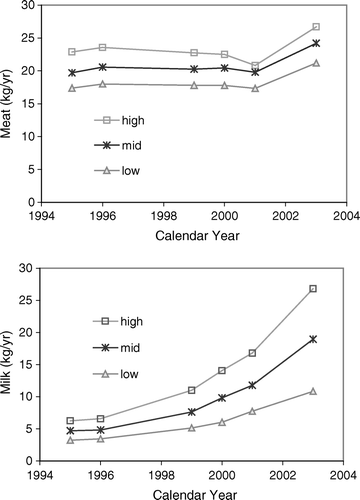Figures & data
Table I. Sample size of BMI by age.
Table II. Distribution of z-scores of BMI for the cities compared to expectation assuming normality – area between adjacent centiles (%).
Figure 1. Median BMI in boys and girls by age. Jinan, Xuzhou, Shanghai 2000; Hefei, Shanghai 1986 (solid lines), US CDC 2000 and British 1990 (dashed lines). To help distinguish between the curves, the ordering of the legend matches the ordering of the curves at age 18 (age 6 for Shanghai 1986), so that for example Jinan is both the highest curve at age 18 and the top entry in the legend.
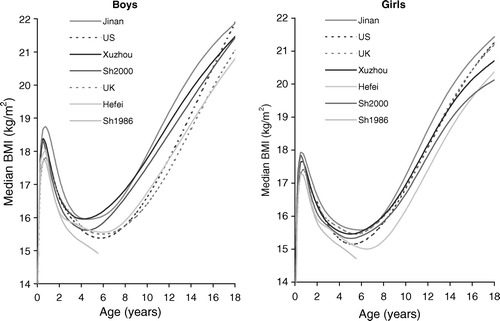
Figure 2. The 91st centiles of BMI in boys and girls by age. Jinan, Xuzhou, Shanghai 2000; Hefei, Shanghai 1986 (solid lines), US CDC 2000 and British 1990 (dashed lines). To help distinguish between the curves, the ordering of the legend matches the ordering of the curves at age 18 (age 6 for Shanghai 1986).
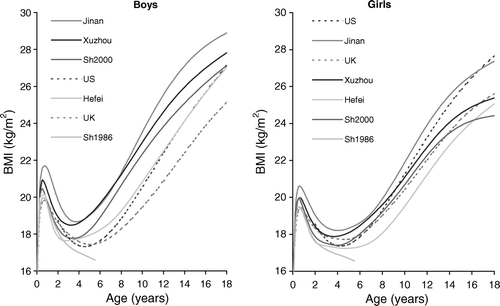
Figure 3. The 2nd centiles of BMI in boys and girls by age. Jinan, Xuzhou, Shanghai 2000; Hefei, Shanghai 1986 (solid lines), US CDC 2000 and British 1990 (dashed lines). To help distinguish between the curves, the ordering of the legend matches the ordering of the curves at age 18 (age 6 for Shanghai 1986).
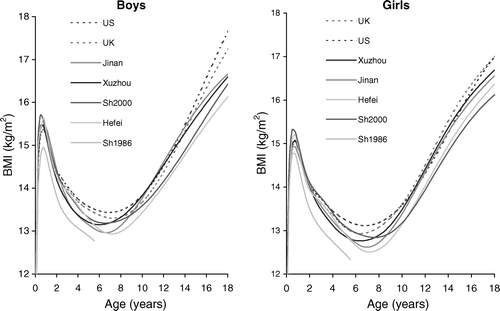
Figure 4. Rates of overweight and obesity in boys and girls by age based on the IOTF cut-offs (Cole et al. 2000) in Jinan, Xuzhou, Shanghai 2000 and Hefei, and the Health Survey for England 2001–2002 (Sproston and Primatesta Citation2003).

Figure 5. Per capita annual purchases of cereals, vegetables, meat, eggs, fish, milk and poultry of urban households in China by year.
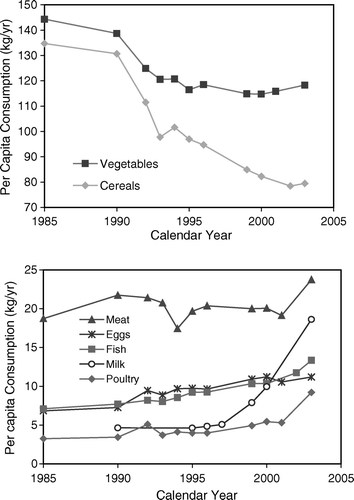
Figure 6. Per capita annual purchases of meat and milk of urban households in China by income level by year.
